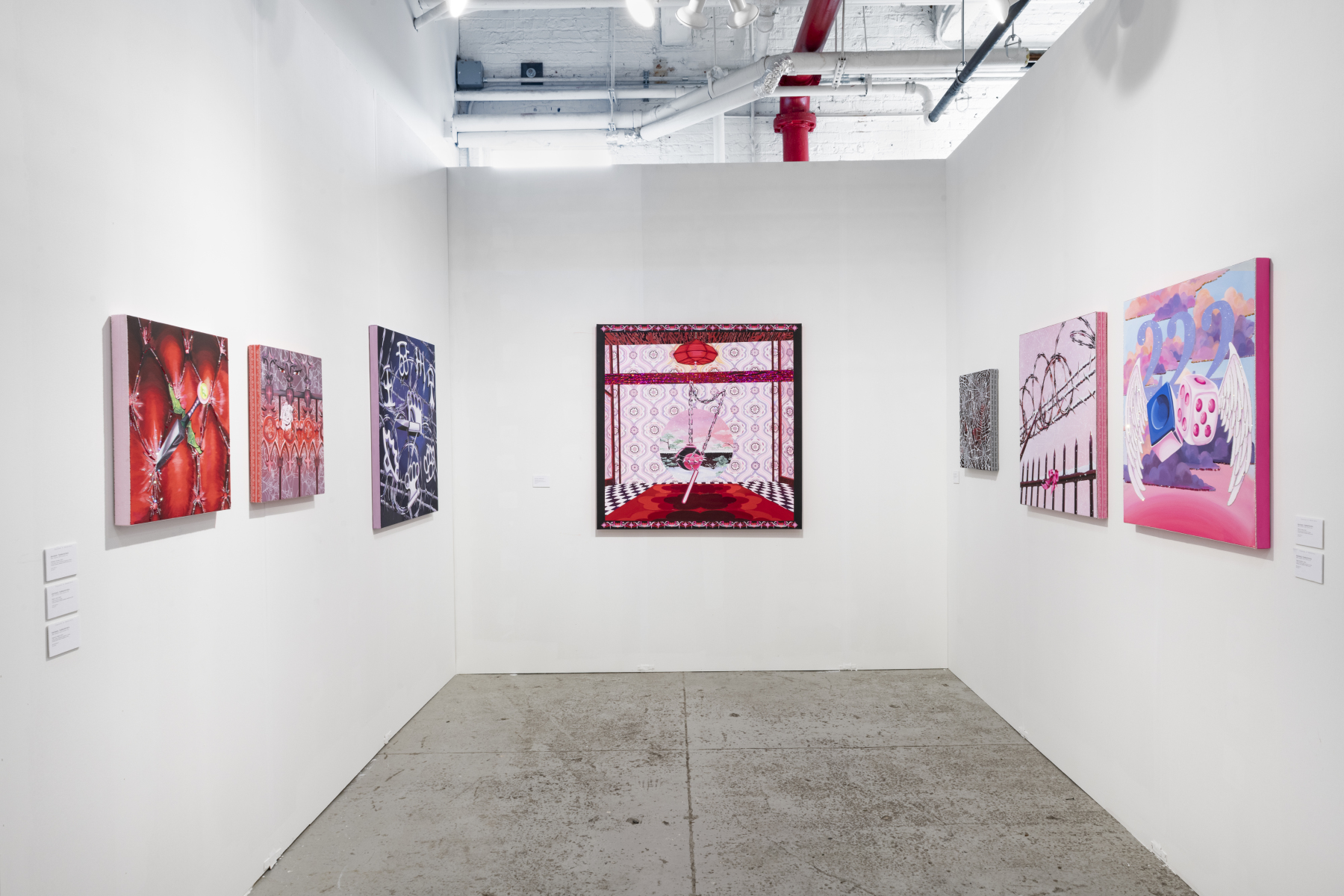NADA New York
May 02 - May 05, 2024
NADA New York
May 02 - May 05, 2024
Ceysson & Bénétière is pleased to present a solo booth of new paintings especially made for NADA New York by Brooklyn based artist Rachael Tarravechia. This series of paintings will exist in direct dialogue with the solo exhibition at Ceysson & Bénétière New York opening May 8th, 2024.
Tarravechia has always been intrigued by the intersection of popular culture, girlhood, and horror—weaving narratives and scenes from her own life into her compositions. In her recent works, Tarravechia sets her scenes in the uncanny interiors of actual 1970s homes available for sale on Zillow. What initially appear to be bright, glittering, inviting rooms slowly reveal themselves to be peppered with evidence of some dark unsettling occurrence. The plush carpeting, psychedelic wallpapers, and walls of mirrors pull you into the disorienting dreamlike funhouse of Tarravechia’s world. Cartoonish phones, anime eyes, butterflies, and bows greet you with overwhelming sweetness. Characters and objects from 90s girlhood classics like Hello Kitty and Sailor Moon attract the viewer with their familiar innocence. Once your eyes have adjusted to the hot red and pink temperature of the palette, it doesn’t take long for the weapons and eerie lack of human presence to settle in. A knife, a scythe, a floating gloved hand about to cut a phone cord; all point to a mystery ready to unfold. Tarravechia gives no narrative, only clues, creating the sense that the answer is always one step away, always around the next corner—drawing the viewer deeper and deeper into her world.
Tarravechia takes particular aesthetic and narrative inspiration from Japanese horror and Italian Giallo films, which are especially known for the psychological or supernatural undertone of their horror. These films took place in settings not too dissimilar from the homes Tarravechia paints. Long lingering shots and faceless killers let the setting do the storytelling. The psychological and sexual state of the mainly female victims play into age-long moralizing tropes of feminine hysteria and the danger of female sexuality. Similarly, possessed floating objects are often the weapons of choice in 1970s Japanese horror films such as House (1977).
It’s the savvy balance of sugar and spice that lends magic to Tarravechia’s paintings. The works themselves seem to glow with hidden spirited possession, making them impossible to look away from. The darkness of girlhood, the intrigue of psychological unraveling, and the whirlwind experience of losing oneself are all central concerns of Tarravechia’s work. Existing in direct dialogue with films such as Sofia Coppola’s The Virgin Suicides (1999) and James Mangold’s Girl, Interrupted (1999), Tarravechia represents a voice in this generations analysis of the fraught experience of girlhood.
